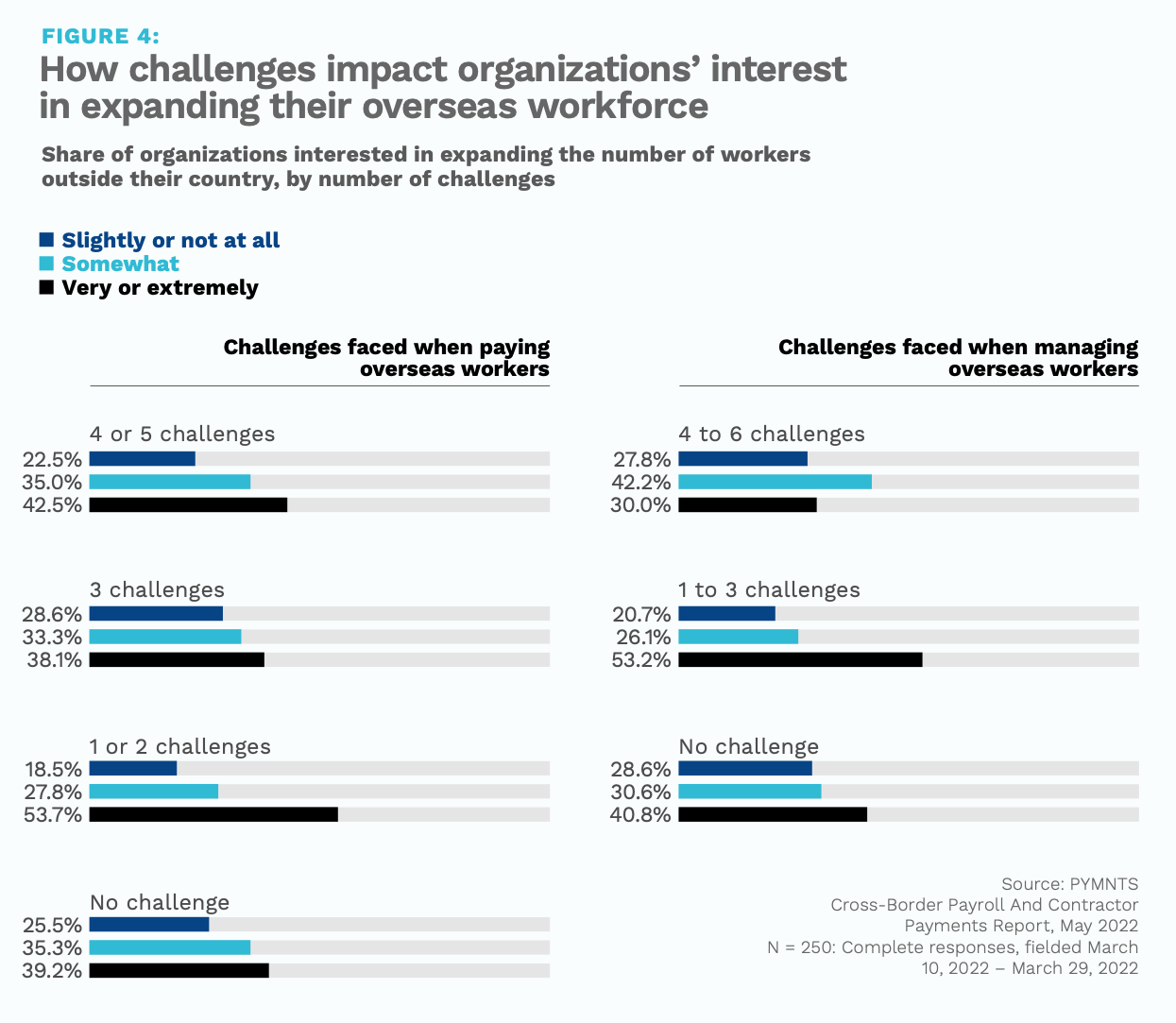
When hiring and paying workers cross-border, companies can face payment hurdles and other barriers making the process more difficult, often requiring the use of specialized global payment platforms to get funds into the hands of workers in different countries.
Based on a survey of 250 executives in accounts payable, payroll or payments at U.S.- and U.K.-based companies with more than $100 million in annual revenue, the study “Meeting The Demand For Cross-Border Hiring: Challenges In International Workforce Payment And Management,” a PYMNTS and Nium collaboration, explores the issues around cross-border hiring and payments.

While 20% of organizations reported no issues with either hiring or making worker payments cross-border, 14% said paying workers in other countries is a pain point, with the study stating that “middle-income companies struggle to manage and pay international hires more than smaller organizations, yet do not have access to the same resources as larger organizations.”
Ironically, we found organizations that have experienced the most challenges when managing and paying overseas workers have significantly increased their cross-border workforce, which suggests they are committed to growing internationally despite the obstacles. These organizations may also be more likely to look for a solution to their challenges via payment innovation or a private agency.
“Organizations that report the need to comply with regulations in different countries as the most challenging factor when paying international workers are more interested in expanding their cross-border workforce (60%) and innovating payment methods (26%) than those that cite financial safety (39%) and security (13%) as the most challenging factors,” according to the data.
Per the study, “19% of organizations cited the need to comply with regulations in different countries as their biggest challenge when paying overseas workers. This is followed by issues with the safety and security of financial data, which 16% of organizations named as their primary challenge. Cybersecurity and data privacy risk was the most important challenge for 17% of organizations when managing overseas workers, while 14% of organizations struggled with paying their cross-border workforce.”
Additionally, the study notes, “Of organizations that experienced payment challenges, 39% used a private agency in the last 12 months, while 35% of organizations that used a private agency did not report any payment challenges.”
Get your copy: Meeting The Demand For Cross-Border Hiring: Challenges In International Workforce Payment And Management